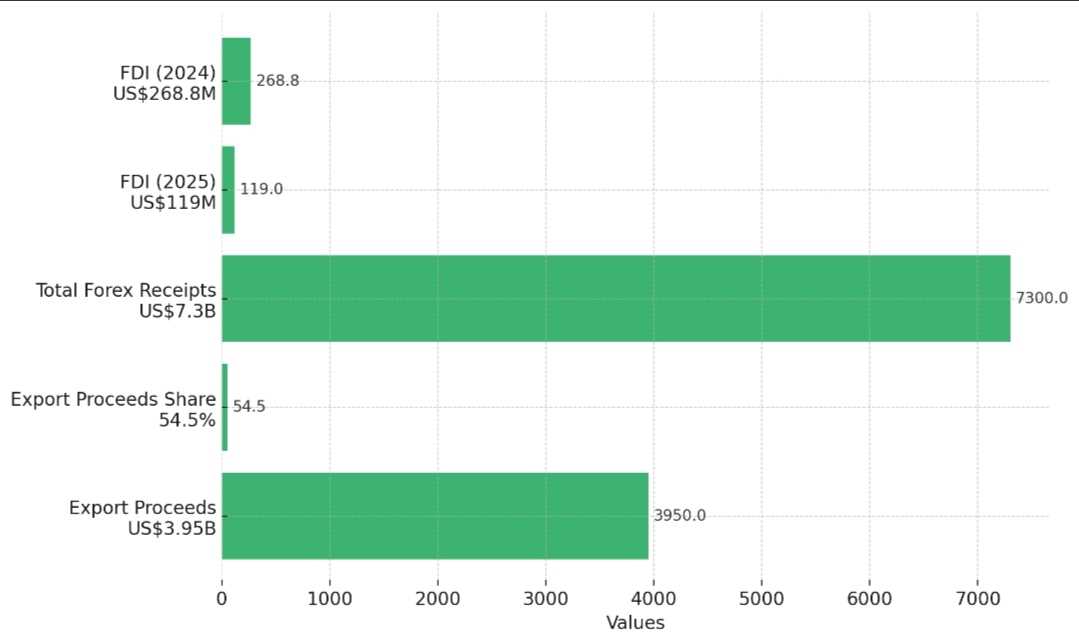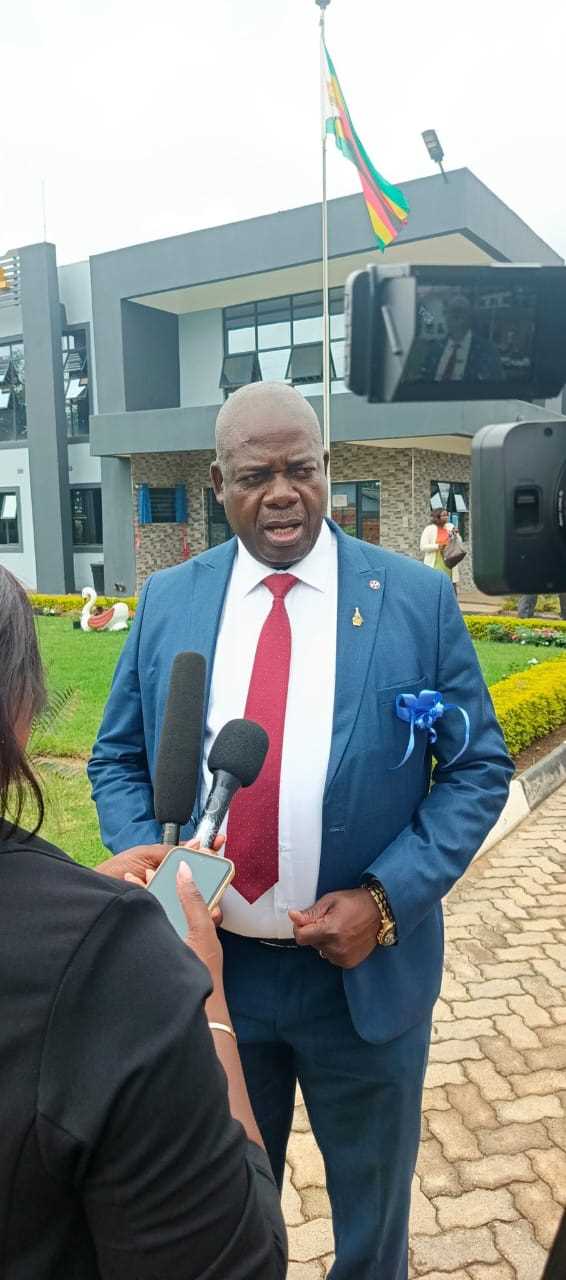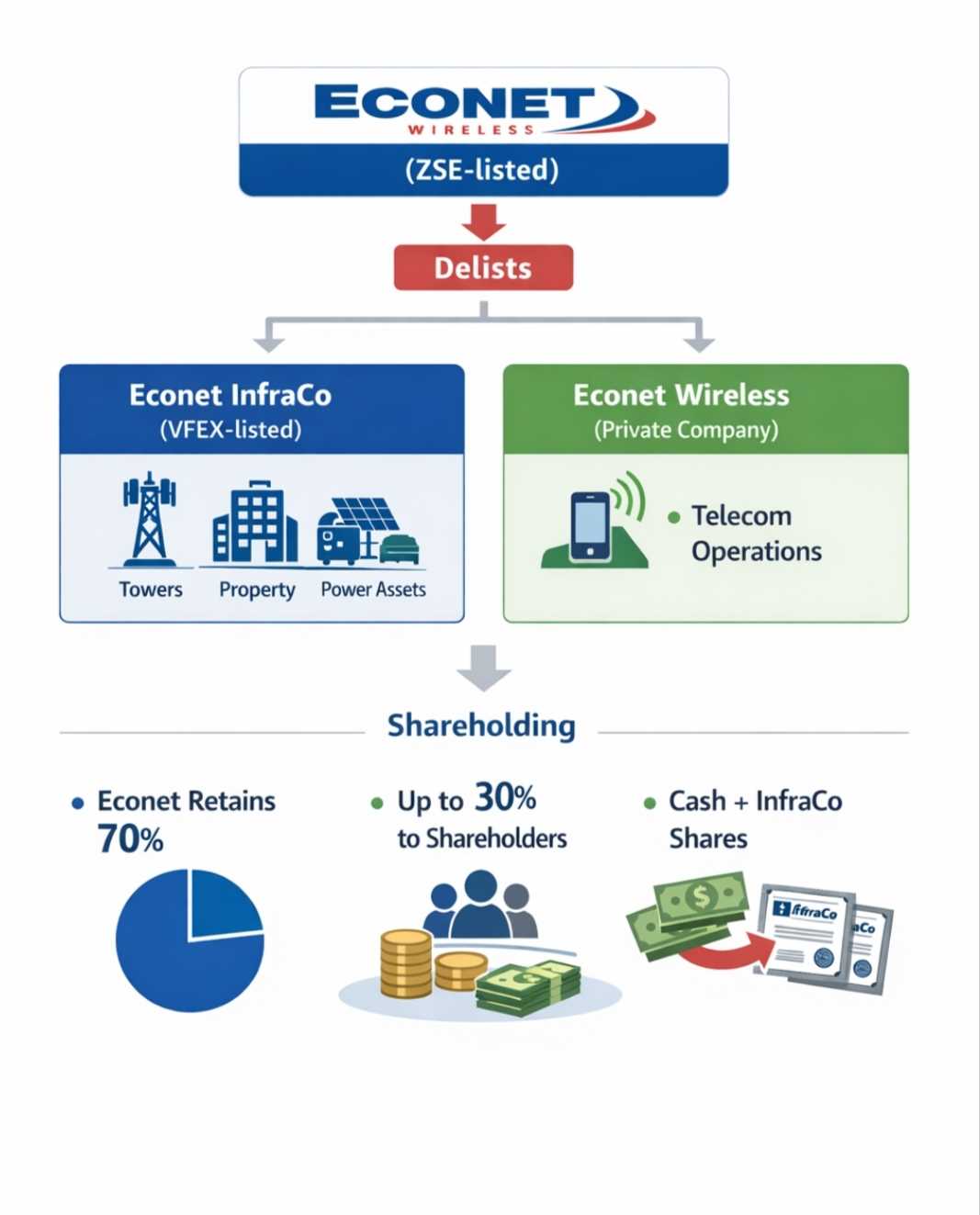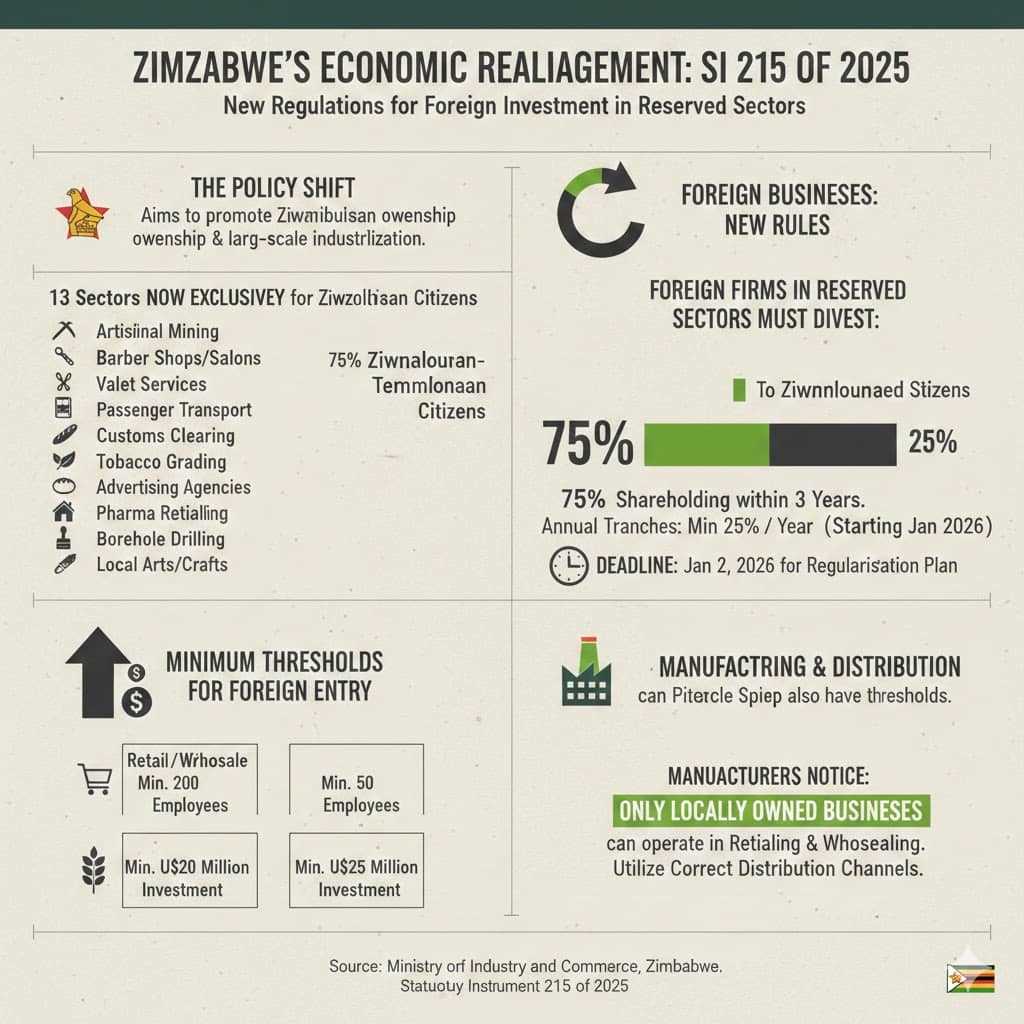
Audrey Galawu- Assistant Editor
Zimbabwe has recorded a dramatic decline in foreign direct investment in the first half of 2025, even as total foreign currency receipts hit US$7.3 billion, a 23.1% increase from the same period in 2024.
The Reserve Bank of Zimbabwe's Mid-Term Monetary Policy Statement shows that FDI inflows fell by 55.7%, from US$268.8 million in the first half of 2024 to just US$119 million in the same period this year.
The slump in FDI contrasts with a general increase in other foreign currency inflows such as export earnings and diaspora remittances. Export proceeds alone contributed 54.5% of total receipts, totaling US$3.95 billion.
Analysts say the drop in foreign investment could be linked to global economic uncertainties, geopolitical tensions, and Zimbabwe-specific policy ambiguities. In particular, stakeholders have called on the central bank to provide more clarity on the country's de-dollarisation roadmap.
"Stakeholders highlighted that clarity on the de-dollarisation roadmap is critical to dispel misconceptions, enhance confidence, shape expectations and support sustained use of ZiG in the economy," the MPS notes.
Related Stories
In an effort to stabilise expectations, the RBZ reaffirmed its commitment to the current multicurrency system, which will remain in place until at least 2030.
During this period, foreign currency will continue to be used for pricing, foreign payments, and settlement of financial obligations.
The lack of investment is a concern for Zimbabwe's ambitions to sustain high economic growth rates and build a diversified, resilient economy. FDI is a key source of long-term capital and technological transfer.
With the economy projected to grow by 6% in 2025, the MPS stresses the need for consistent and transparent policies to attract and retain investors.
The central bank has pledged to continue engaging with stakeholders and strengthening policy communication to address investor concerns and stabilise expectations.




















Leave Comments